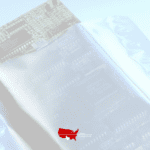How Do Desiccant Bags Work, And Why Should I Use Them?
A desiccant bag should be placed within an airtight system that prevents air circulation into the product for optimal performance. Typically, desiccant bags achieve this airtight environment using aluminum or barrier foil, which encases the stored or transported product. Desiccant bags absorb moisture, ensuring the moisture level within the product remains optimal during storage or transit. Industries define the standard performance metric for desiccants by desiccant units, where one unit corresponds to an adsorption capacity of 6 grams of water at 77°F (25°C) and 40% relative humidity.
Excessive moisture presents considerable risks, including rust, corrosion, and product damage. Desiccant bags efficiently absorb moisture, trapping it inside the bag. Engineered to permit moisture entry but block its release, these bags are available in different sizes to suit your requirements. Desiccant bags provide dependable moisture control for small packages, medium-sized shipments, containers, or large consignments.
Desi Pak® clay desiccant bags feature a highly activated, chemically inert, and non-corrosive desiccant. The desiccant efficiently absorbs moisture vapor through capillary action without altering the physical structure of the particles or the bag itself. Desi Pak® unit bags not only meet but surpass the standards set by Mil-D-3464E in real-world performance, outperforming silica gel at government-specified moisture vapor adsorption levels. Unlike chemically synthesized adsorbents, Desi Pak® montmorillonite clay is a naturally occurring mineral, making it a more cost-effective option compared to silica gel or molecular sieves!
We have Desi-Pak Craft Paper Bags Desiccants, Desi-Pak Tyvek Bags Clay Desiccants, and Desi-Pak String Sewn Bags Desiccants available for purchase on our site. Click here to check them out!


